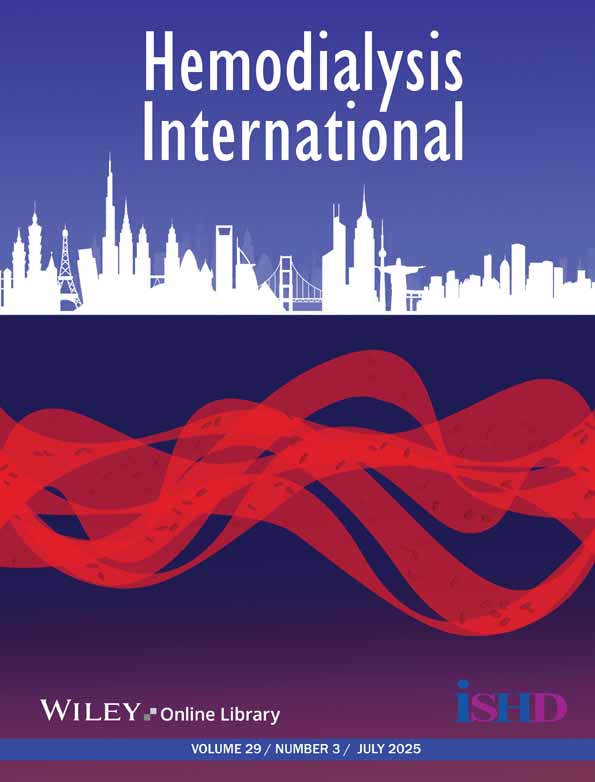Analysis and Management of Perivenous Tissue Pain in the Outflow Tract of Arteriovenous Fistulas During Dialysis
Funding: Science and Technology Development Program of Jinan Municipal Health Commission (2017-1-23).
ABSTRACT
Background
Pain is a prevalent cause of medical consultation among dialysis patients, severely impacting both treatment outcomes and quality of life. This study focuses on a specific yet underexplored type of pain—delayed and progressive perivenous tissue pain in the outflow tract of arteriovenous fistulas (AV fistula) during dialysis. The aim is to summarize its clinical features, investigate its underlying mechanisms, and evaluate the effectiveness of various treatments, ultimately providing new insights into pain management.
Methods
This study included 36 patients who experienced delayed and progressive perivenous tissue pain in the outflow tract of AV fistulas during dialysis. Pain features were systematically summarized, and the AV fistula status was comprehensively evaluated through general observation, physical examination, and imaging. A series of trial interventions were employed to further explore the underlying mechanisms of pain. Based on these findings, appropriate treatment strategies were identified and implemented, with therapeutic outcomes monitored over a 12-month follow-up.
Findings
The specific pain may be closely associated with venous hypertension. Ultrasonography identified high-flow fistulas in 18 patients, while angiography revealed varying degrees of outflow vein stenosis in 23 patients. Five patients with slightly elevated fistula blood flow and no significant stenosis underwent bandage compression therapy. Thirty-one patients with markedly increased blood flow and/or outflow vein stenosis received ultrasound-guided flow restriction surgery, percutaneous transluminal angioplasty, or combined therapies. All patients achieved pain relief, with no recurrence during the follow-up period.
Conclusions
This study systematically investigates perivenous tissue pain in the outflow tract of AV fistula during dialysis. Venous hypertension is likely the primary underlying cause of this condition. Treatment options, including bandage compression, flow restriction surgery, percutaneous transluminal angioplasty, and combined therapies, effectively alleviate the tissue pain.
Conflicts of Interest
The authors declare no conflicts of interest.
Open Research
Data Availability Statement
The data used to support the findings of this study are available from the first author and the corresponding author upon request.




